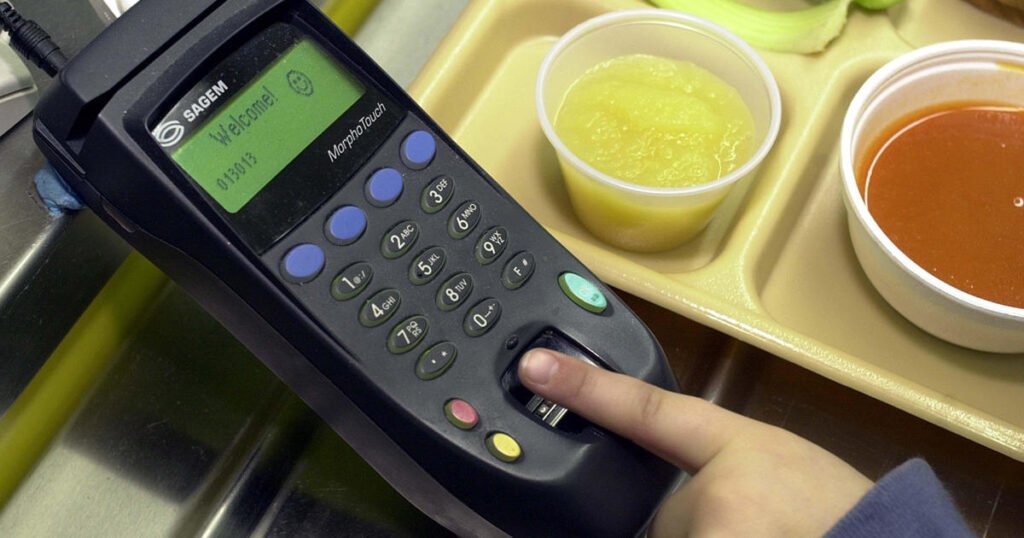The U.S. Division of Agriculture introduced that college students eligible at no cost or reduced-price faculty meals can’t be charged processing charges, also referred to as junk charges, starting in 2027.
Faculty districts presently work with processing firms to supply cashless fee programs for households. However the firms can cost “processing charges” for every transaction. By legislation, college students who’re eligible for diminished value meals can’t be charged greater than 30 cents for breakfast and 40 cents for lunch. With processing charges, nevertheless, households can find yourself paying 10 occasions that quantity. Processing firms cost as a lot as $3.25 or 4% to five% per transaction, in response to a current report from the Shopper Monetary Safety Bureau.
For households with decrease incomes who cannot afford to load giant sums in a single go, processing charges can arrive weekly or much more often, rising prices disproportionately. Households that qualify at no cost or diminished lunch pay as a lot as 60 cents per greenback in charges when paying for varsity lunches electronically, in response to the report.
The brand new Agriculture Division’s coverage turns into efficient beginning within the 2027-2028 faculty yr. With this rule, the USDA will decrease prices for households with earnings beneath 185% of federal poverty pointers, which equals $57,720 for a household of 4.
“USDA and faculties throughout America share the frequent aim of nourishing schoolchildren and giving them the gasoline they should study, develop and thrive,” mentioned Agriculture Secretary Tom Vilsack in an announcement Friday. “Whereas right this moment’s motion to get rid of further charges for lower-income households is a serious step in the proper course, essentially the most equitable path ahead is to supply each little one entry to wholesome faculty meals for free of charge. We’ll proceed to work with Congress to maneuver towards that aim so all children have the vitamin they should attain their full potential.”
The choice by the USDA follows a CFPB report that discovered on-line faculty meal funds predominantly have an effect on low-income households. Faculty lunch charges collectively price households upwards of $100 million every year, in response to the report.
The U.S. Division of Agriculture has mandated that faculty districts inform households of their choices since 2017, however even when dad and mom are conscious, having to pay by money or verify to keep away from charges may be burdensome.
“It is simply massively inconvenient,” mentioned Joanna Roa, 43, who works at Clemson College in South Carolina as a library specialist and has two school-aged youngsters.
Roa mentioned that when her son was in first grade and she or he noticed the $3.25-per-transaction charge for lunch account transactions, she and her husband determined to ship him to highschool with packed lunches as a substitute.
“A greenback right here and there, I anticipated,” she mentioned. “However $3.25 per transaction, particularly right here in rural South Carolina the place the price of dwelling is quite a bit decrease — as are the salaries — is quite a bit.”
Roa mentioned packing lunch for 2 children daily turned a burden in each effort and time for 2 working dad and mom. For the previous two years, because of surplus funds, her faculty district has been offering free faculty lunches which has modified the equation, however Roa mentioned that would finish at any level.
In its evaluate of the 300 largest public faculty districts within the U.S., the CFPB discovered that 87% of sampled districts contract with fee processors. Inside these districts, the businesses cost a mean of $2.37 or 4.4% of the full transaction, every time cash is added to a toddler’s account.
Whereas fee firms preserve that faculty districts can negotiate charges and charges earlier than they comply with contracts, the CFPB discovered that advanced firm constructions “might insulate firms from competitors and make faculty districts much less more likely to negotiate.” Simply three firms — MySchoolBucks, SchoolCafe, and LINQ Join — dominate the market, in response to the report.
With out the power to decide on which firm to work with, “households have fewer methods to keep away from dangerous practices,” the company mentioned, “together with those who might violate federal client safety legislation.”
___
“The Related Press receives assist from Charles Schwab Basis for instructional and explanatory reporting to enhance monetary literacy. The impartial basis is separate from Charles Schwab and Co. Inc. The AP is solely chargeable for its journalism.”
